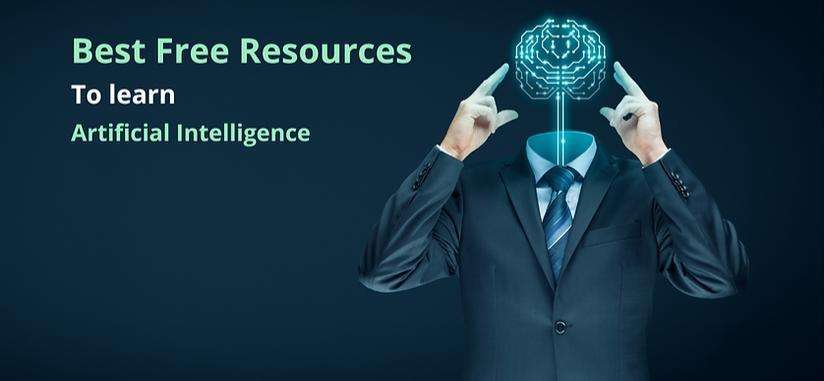
Artificial intelligence (AI) is not just a buzzword or a futuristic concept. It is a reality that is already impacting various aspects of our lives, especially in the healthcare industry.
AI is the use of computer systems or software to perform tasks that normally require human intelligence, such as diagnosis, treatment, prediction, and prevention of diseases.
AI has the potential to improve the quality, efficiency, and accessibility of healthcare services, as well as to reduce costs and errors.
In this article, we will explore some of the ways that AI is transforming the healthcare industry and saving lives.
AI for Diagnosis and Treatment
One of the most important and challenging aspects of healthcare is the accurate and timely diagnosis and treatment of diseases.
AI can help doctors and patients by providing faster, more accurate, and more personalized diagnosis and treatment options.
For example, AI can analyze large amounts of data from medical records, images, tests, and symptoms to identify patterns and anomalies that may indicate a disease or condition.
AI can also suggest the best course of action based on the available evidence and the patient’s preferences and history.
Some of the applications of AI for diagnosis and treatment include:
1. AI for cancer detection and treatment:
AI can help detect cancer at an early stage by analyzing images such as mammograms, CT scans, and MRI scans.
AI can also help design and optimize personalized treatment plans for cancer patients, such as radiation therapy, chemotherapy, and immunotherapy.
AI can also monitor the patient’s response and adjust the treatment accordingly.
For example, IBM Watson for Oncology is a cognitive computing system that can provide evidence-based treatment recommendations for cancer patients based on their medical records and the latest research.
2. AI for mental health:
AI can help diagnose and treat mental health disorders such as depression, anxiety, bipolar disorder, and schizophrenia.
AI can use natural language processing (NLP) and sentiment analysis to understand the patient’s speech and text, and detect signs of distress, mood, and emotion.
AI can also provide cognitive behavioural therapy (CBT) and other forms of psychotherapy through chatbots, apps, and virtual reality.
For example, Woebot is a chatbot that can provide CBT for depression and anxiety through text messages.
3. AI for rare diseases:
AI can help diagnose and treat rare diseases that affect a small number of people and are often difficult to diagnose and treat.
AI can use genomic data and machine learning to identify the genetic mutations and variants that cause rare diseases, and suggest potential therapies and clinical trials.
For example, Deep Genomics is a company that uses AI to discover new drugs for rare diseases.
AI for Prediction and Prevention
Another important and challenging aspect of healthcare is the prediction and prevention of diseases and complications.
AI can help doctors and patients by providing proactive and preventive care, rather than reactive and curative care.
AI can use data from various sources, such as medical records, wearable devices, environmental sensors, and social media, to predict the risk of developing a disease or experiencing a complication, and to suggest preventive measures and interventions.
Some of the applications of AI for prediction and prevention include:
1. AI for cardiovascular diseases:
AI can help predict and prevent cardiovascular diseases, such as heart attacks, strokes, and heart failure, which are the leading causes of death worldwide.
AI can use data from electrocardiograms (ECGs), blood pressure monitors, fitness trackers, and other devices to monitor the patient’s heart health and detect any abnormalities or signs of deterioration.
AI can also use data from lifestyle factors, such as diet, exercise, smoking, and stress, to assess the patient’s risk of developing cardiovascular diseases, and to recommend changes and interventions.
For example, AliveCor is a company that produces a device that can record an ECG using a smartphone, and use AI to detect atrial fibrillation, a common and potentially fatal heart rhythm disorder.
2. AI for infectious diseases:
AI can help predict and prevent infectious diseases, such as COVID-19, influenza, and tuberculosis, which are the major threats to public health and safety.
AI can use data from epidemiological models, surveillance systems, social media, and other sources to track and forecast the spread and impact of infectious diseases, and to inform the public and the authorities about the best practices and policies to contain and prevent them.
AI can also use data from genomic sequencing, drug discovery, and vaccine development to identify the causes and cures of infectious diseases.
For example, BlueDot is a company that uses AI to monitor and predict the outbreak and spread of infectious diseases, and to alert the public and the health officials about the potential risks and actions.
3. AI for chronic diseases:
AI can help predict and prevent chronic diseases, such as diabetes, asthma, and arthritis, which are the leading causes of disability and morbidity worldwide.
AI can use data from glucose monitors, inhalers, medication adherence, and other devices to monitor the patient’s condition and adherence, and to detect any fluctuations or deviations.
AI can also use data from lifestyle factors, such as nutrition, physical activity, and stress, to assess the patient’s risk of developing or worsening chronic diseases, and to recommend changes and interventions.
For example, Livongo is a company that uses AI to provide personalized coaching and feedback for people with diabetes, based on their blood glucose levels, medication, and behaviour.
AI for Accessibility and Affordability
Another important and challenging aspect of healthcare is the accessibility and affordability of healthcare services, especially for the underserved and marginalized populations.
AI can help doctors and patients by providing more accessible and affordable healthcare services, by reducing the barriers and costs of healthcare delivery.
AI can use telemedicine, mobile health, and cloud computing to provide remote and virtual healthcare services, such as consultation, diagnosis, treatment, and monitoring, to anyone, anywhere, anytime.
AI can also use automation, optimization, and standardization to reduce the workload and errors of healthcare professionals, and to improve the efficiency and quality of healthcare services.
Some of the applications of AI for accessibility and affordability include:
1. AI for primary care:
AI can help provide primary care, which is the first point of contact and the most essential level of healthcare, to the people who lack access to or cannot afford a doctor.
AI can use chatbots, apps, and voice assistants to provide basic healthcare services, such as symptom checking, triage, diagnosis, treatment, referral, and follow-up, to the users through their smartphones or other devices.
AI can also use natural language understanding (NLU) and speech recognition to communicate with the users in their native language and dialect.
For example, Babylon Health is a company that provides an app that can act as a virtual doctor, and provide primary care services to the users through their smartphones.
2. AI for radiology:
AI can help provide radiology, which is the use of medical imaging to diagnose and treat diseases, to the people who lack access to or cannot afford a radiologist.
AI can use computer vision and deep learning to analyze medical images, such as X-rays, ultrasound, and MRI, and to detect and diagnose diseases, such as pneumonia, fractures, and tumours.
AI can also use natural language generation (NLG) to generate reports and recommendations based on the image analysis.
For example, Zebra Medical Vision is a company that uses AI to provide automated and accurate radiology services to the users through their cloud platform.
3. AI for surgery:
AI can help provide surgery, which is the use of invasive procedures to treat diseases, to the people who lack access to or cannot afford a surgeon.
AI can use robotics and computer-assisted surgery to perform surgical procedures, such as biopsies, sutures, and implants, with more precision, accuracy, and safety than human surgeons.
AI can also use data from surgical simulations, videos, and outcomes to learn and improve the surgical skills and techniques.
For example, Intuitive Surgical is a company that produces a robotic surgical system called da Vinci, which can perform minimally invasive surgery with the assistance of AI.
Conclusion
AI is transforming the healthcare industry and saving lives by providing faster, more accurate, more personalized, more proactive, more accessible, and more affordable healthcare services.
AI is not a replacement for human doctors, but a complement and a partner that can augment and enhance their capabilities and performance.
AI is not a threat to human health, but a benefit and a boon that can improve and extend human life. AI is not a fantasy or a fiction, but a fact and a force that is already changing the world for the better.
RELATED ARTICLES
- The ethical challenges of developing and deploying AI systems
- The best AI tools and frameworks for beginners
- The impact of AI on education and learning
- The Top AI 10 Research Projects and Breakthroughs of 2024
- The most common AI myths and misconceptions
- Artificial intelligence (AI) comprehensive Guide: Definition, How it works, Examples, Types and Applications









